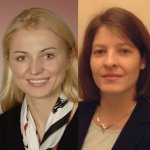
Definiens Lymphexpert launched for European Radiologists
Definiens, the number one Enterprise Image Intelligence company, launched its first computer-aided detection (CAD) application, Definiens LymphExpert at the annual European Congress of Radiology (ECR) in Vienna, Austria. Now commercially available for European radiologists, the application assists in tracking lymph nodes of interest, facilitating earlier detection of the metastatic spread of…
























